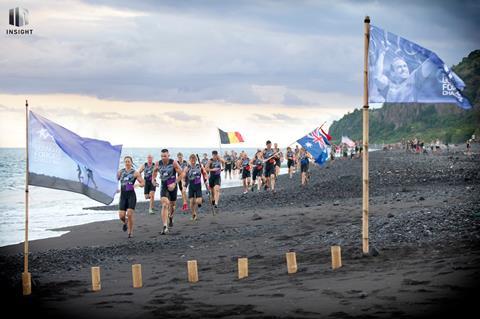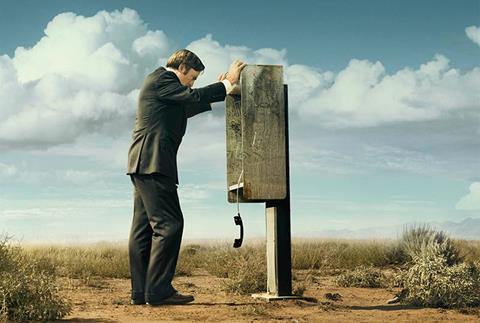Viewers are adopting UHD displays in ever-increasing numbers as content creators promise a greater range of content.

European consumers are enthusiastically snapping up Ultra High Definition displays and services, according to SES’ 2017 Satellite Monitor studies.
Ricardo Topham, Senior Market and Business Analyst at SES, which transmits 34 UHD channels, says that as of the end of 2016 Europe had some 17.3m UHD screens, which equates to 6.6% of homes. Last year, the number of UHD screens stood at 12.1m.
Drilling down into the numbers SES says that at year-end 2016 German consumers had bought 2.22m UHD displays more than doubling on the country’s 2015 numbers.
France is even more enthusiastic, with a high proportion of consumers being aware of UHD’s merits, and 2.61 million displays having been bought (up from 1.8 in 2015) which is some 10% of TV homes.
Spain, despite plenty of stories about its economic downturn, are keen buyers of UHD kit with some 1.3m purchasing displays (some 7.2% of TV homes).
However, the UK remains keenest for UHD technology. Some 2.59m – close to 10% of homes – have UHD displays, up from 1.72m in 2015.
More data from IHS Markit’s research team on UHD shipments suggests that Western Europe alone will see some 11.8m UHD sets shipped in 2017, and some 32% will be at 50-inch or over.
IHS says Eastern Europe will ship an additional 3.88m units.
Even the Middle East and Africa region, where UHD broadcasts are extremely rare, is expected to see 2.2m units shipped, possibly for viewing Netflix and Amazon Prime’s UHD output.
North America will see 17.6m units shipped and typically 48% of displays will measure 50-inch or over.
UHD displays shipped by 2020
W. Europe 18.8m
E. Europe 6.4m
MEA 5.2m
China 44.48m
North America 25.9m
Lat-Am 7.76m
Japan 3.9m
(Source: IHS)
IHS says that it expects the global number of households with a 4K/UHD TV to grow from a mere 28m in 2015 to 335m during 2020.
Last year, says IHS, the number of UHD households doubled over the previous year to a total of 66m homes.
But, it can fairly be asked, where are the programmes and tempting UHD channels?
As IHS Markit states in its March 2017 White Paper, “UHD availability is currently most prevalent on SVoD”.
Creating content
This includes offerings from the likes of Amsterdam-based InsightTV, but also includes the likes of Hulu and country-specific rivals to Netflix and Amazon Prime. Amazon is currently leading the UHD pack with some 150 UHD titles available. But Netflix is catching up extremely quickly.
“Amazon and Netflix are not only acquiring films and documentaries, but they also heavily involved in producing their own content using both higher resolutions and high dynamic range (HDR) technologies,” says IHS.
The Economist newspaper, in its 25 March edition was blunt, saying: “Amazon is going to grow faster, longer and bigger than almost any firm in history”. While this predicted success is not all down to its TV ambitions (there’s also the small matter of books and other on-line retailing) the amount that Amazon is investing in original TV and film production – at $4.5bn for 2017 – is simply staggering.
Netflix is doing even more ($6bn in 2017) and targeting its 94m subscribers. For Amazon this is more than twice HBO’s investment in original content, and for Netflix it is three-times HBO’s spend.
And importantly, just about all of this spend is on UHD and produced in High Dynamic Range (HDR). Look at Better Call Saul or Grace & Frankie, Orange is the New Black or The Blacklist for solid demonstrations of the differences UHD (and usually HDR) can make to the visual impact of a production. And while The Grand Tour might not have captivated every viewer few would argue that its production qualities were superb.

UHD at MipTV
The recent MipTV market saw hour upon hour of superb quality UHD material showcased. Germany’s ZDF previewed its co-production with TVNZ of high-value natural history show Big Pacific.
Dutch production house United4All showed MIPtv delegates how they had brought UHD and HDR magic to The Grand Tour, while London-based Serpent Productions – who focus on large-scale arena music shows – screened a David Gilmore concert captured in Pompeii.
Falling costs
Speaker after speaker at MipTV confirmed that production costs for UHD are falling, and that post-production is increasingly competitive as post-houses gear up for UHD throughput. Workflow practices are improving as crews and technicians get more familiar with processes.
While these new millions of homes will enjoy 4K/UHD (and increasingly High Dynamic Range) entertainment, it is worth remembering that – according to Japan’s Ministry of Internal Affairs & Communications spokesman Masayuki Suga, speaking at MIPtv – that 8K is also coming.
The widespread test transmissions of 2016-2017 will become “full broadcasts by December 2018” as the nation gears up for the 2020 Olympic Games.
IHS Markit says that next year will see up to 250,000 8K units shipped. That extremely modest number will grow to about 1.9m units in 2020.



























No comments yet